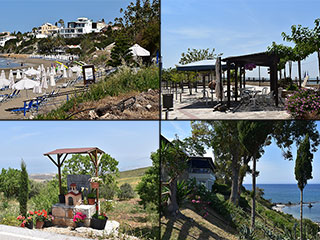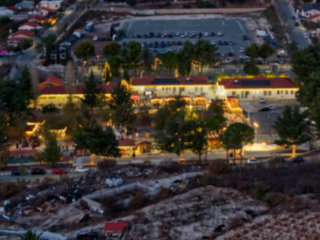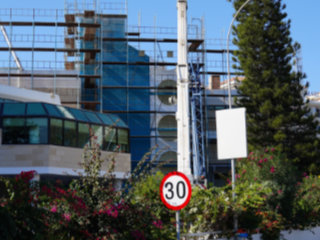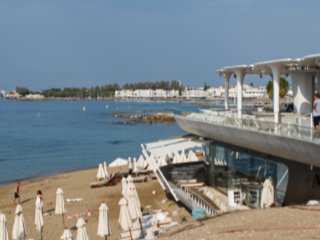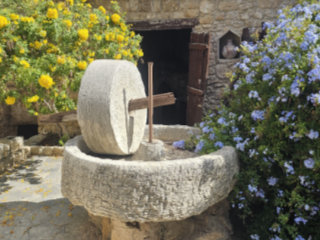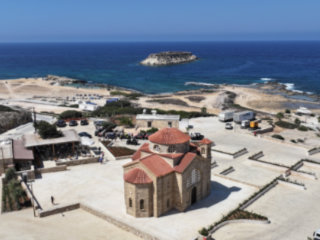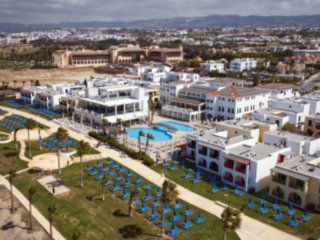The History of Paphos in 16 Pictures
The Turkish Baths
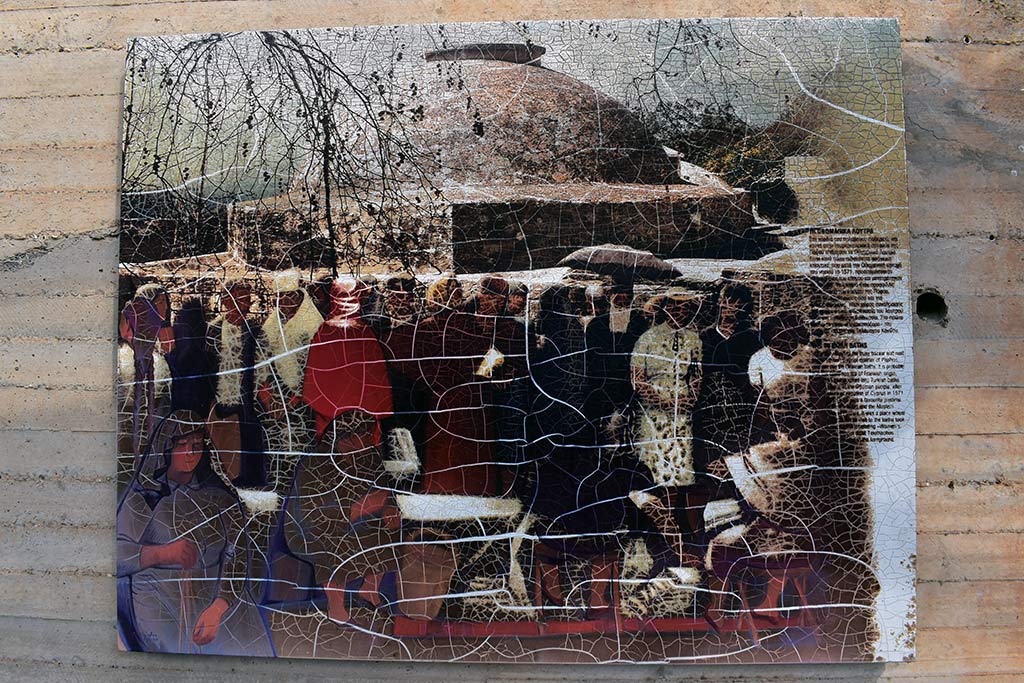
In the very heart of the busy bazaar and next to the Turkish Cypriot quarter of Paphos, one can see the Ottoman baths. It is probable that the buildings are of Frankish origin, that were transformed into Turkish baths for the needs of the Ottoman people, after the Ottoman occupation of Cyprus in 1571. The Turkish bath was a favourite pastime for both the Christian and the Moslem inhabitants of Paphos. It was a place where women met and the visit to the baths took days to prepare. The painting "Women's Market" by Cypriot artist Telemachos Kanthos is depicted in the foreground.
These baths are the buildings directly behind this walkway. We will cover them in a future blog.
British Rule
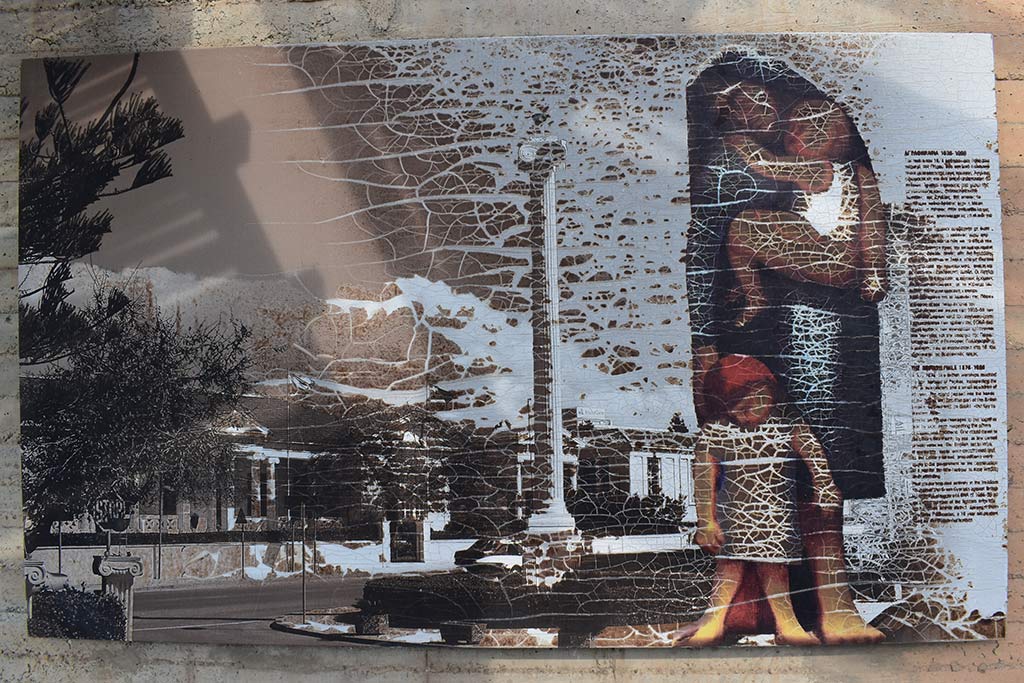
The British Rule 1878 - 1960
In July 1878, two British warships reached the little harbour of Paphos, transporting the first British officers and a small squadron of 40 men. The island passed into the hands of the British and became part of the British Empire. Cyprus was no doubt "the key to Western Asia".
Greeks and turks managed to live together side by side, each respecting the others customs and traditions. One could travel to the other cities mainly by sea, as few owned private vehicles. The English set to work immediately; roads were constructed and, as the century turned, propositions were made to the government for the construction of a pier for the little harbour to ease loading and unloading.
Paphos participated actively in the freedom struggle of the Greek Cypriuos against British Rile. In the struggle of EOKA of 1955 - 1959 and important number of the fighters originate from Paphos and its district. Amongst them Evagoras Pallikarides, a 18 year old student hung by the British Authorities.
Modern Paphos
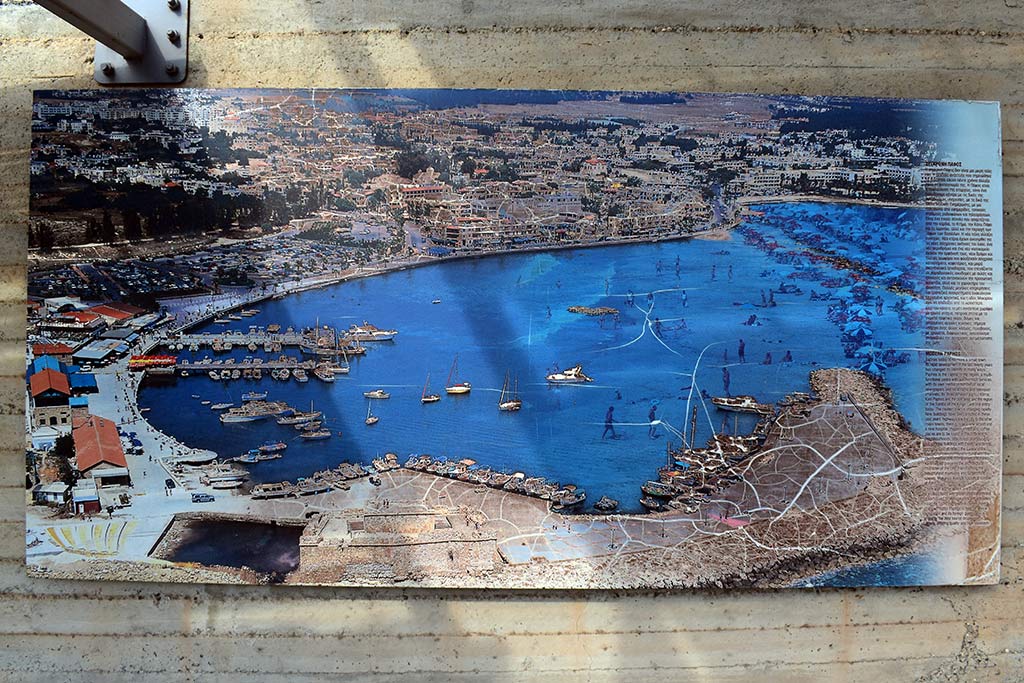
Paphos today is no more a small town. Its rapid development in the last twenty years has changed its identity in may ways. Paphos is the capital of the region, a multi-functional centre with autonomous services, with its own media, a number of local newspapers and local radio and television channels. Not to mention an ace website. Its three different parts - Ktima, Kato Paphos and the port area, and the region of the Tombs of the Kings - are one entity today. The modern town is changing rapidly. New buildings have been erected in these past years, highways link the city to the other major towns, there is now a new airport and a new hospital, modern shops and coffee places are to be found in the different neighbourhoods; little hotels are housed in traditional buildings with their characteristic inner yards that reflect the care and the love of the owners. Hand in hand with the traditional lifestyle, companies and banks have helped preserve the architectural character of the city, transforming the beautiful old mansions into large office spaces. Makarios Avenue houses an umber of them.
There was a time where one could gaze at endless fields with golden crops, traditional stone houses; broken columns and antiquities could be found everywhere. Times have changed; today Paphos is host to a local populations and its foreign guests and is probably the best tourist destination in Cyprus, offering quality and high standards.
The End
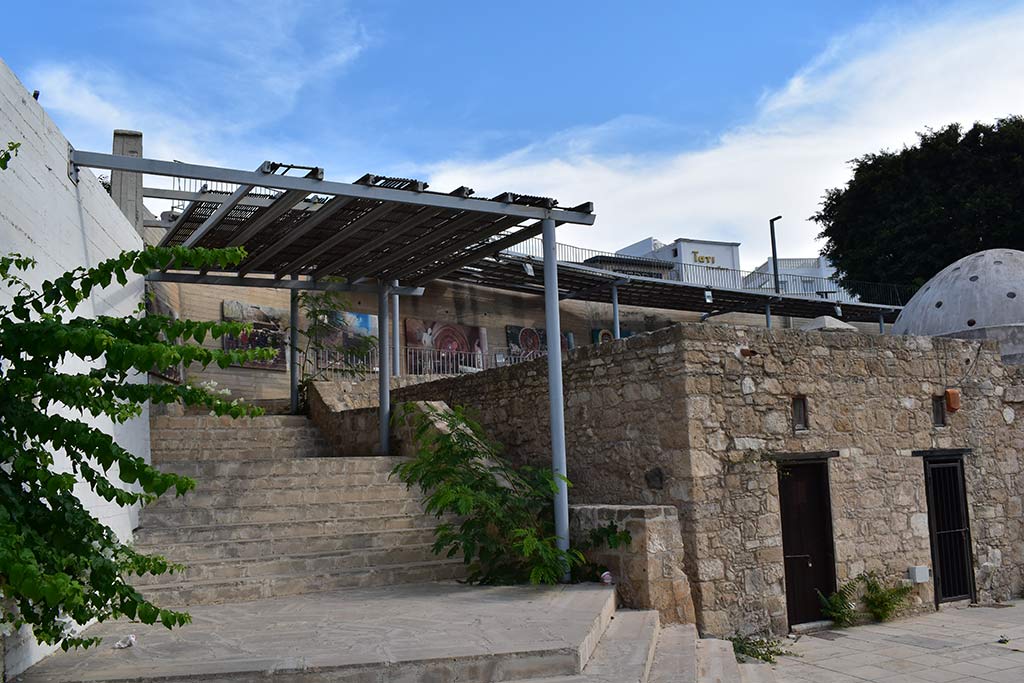
And there you have it. As you descend from the Old Town to the car park, you can get the history of Paphos. It is probably best viewed on a cloudy day or the afternoon though. During the morning the sun shines through that roof cover and casts lots of shadows on over the pictures.
Turkish Baths
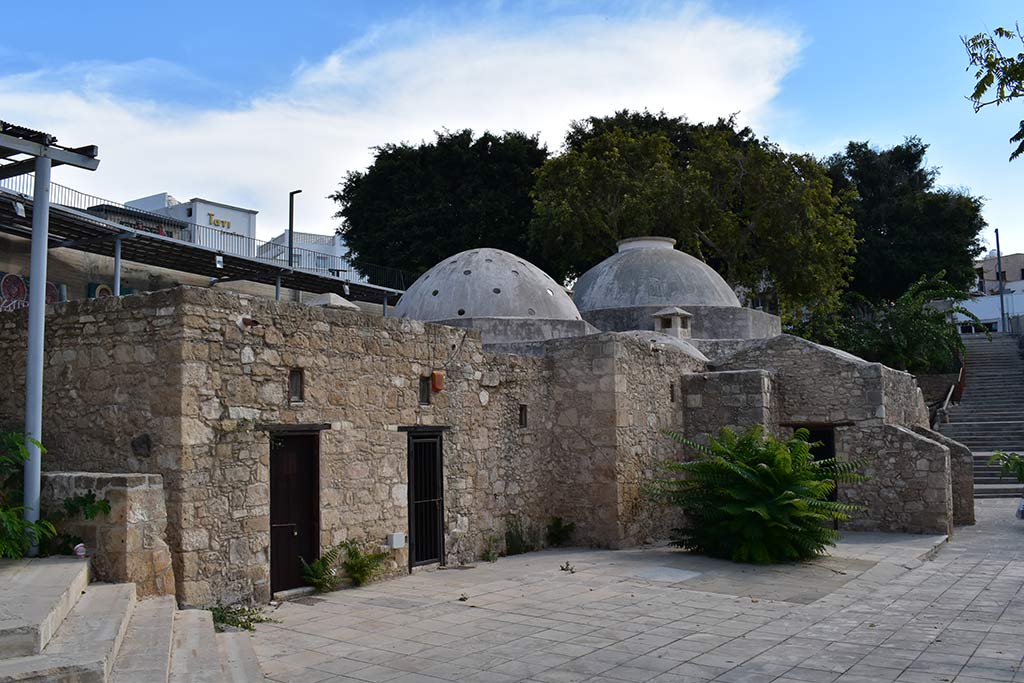
There are the baths mentioned in that history. We will no doubt cover them in another blog. We've been producing blogs on Paphos for nearly two years now, and we are still only scratching the surface, despite having notched up nearly 200 blogs. In fact, it was nice to read this history and be able to link some of the text to blogs we have previously written. It was nice also to see that there were plenty of places mentioned n the text that we have yet to explore...
Page 4 of 4


Related Blogs:
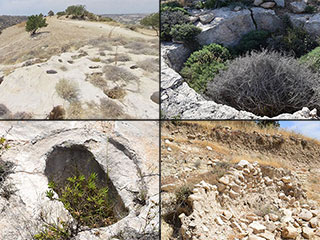
Souskiou Cemetery
Last spring we blogged about our visit to the abandoned village of Souskiou in the Diarizos Valley. We received numerous comments, some of which alluded to an ancient cemetery that lurked in the nearby hills. Well, this naturally piqued our curiosity, and we resolved to track them down. Over the next few months we made numerous excursions, and this is a summary of what we found...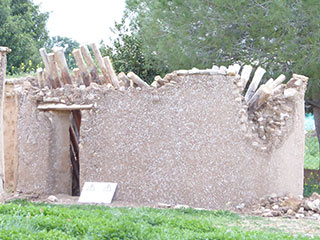
Ancient Lemba
Yesterday a news headline caught my eye: "An ancient Chalcolithic settlement site in Lemba in Paphos urgently requires maintenance, according to the local community leader". We had visited this site before, so I thought I should revisit it to see just how urgent the maintenance was...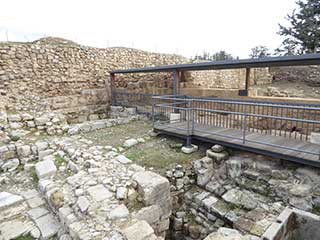
The Ancient Sugar Factory At Kouklia
As you drive along the A6 from Paphos to Limassol, you will pass the Asprokemmos Dam on your left. Just after that you will see some old ruins. This is the site of an ancient sugar factory.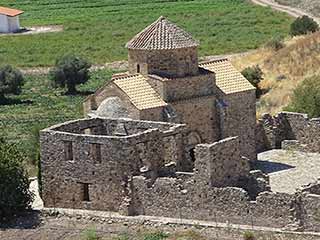
Sinti Monastery
It's time for another guest blog, and this time Max has taken a break from his minerals to show us somewhere a bit more spiritual. Over to you Max... Sinti Monastery is a very important ancient monument and not far away from Paphos, in the beautiful Xeros River Valley. I thought I would take a round trip. In order that people can visit the place all year round (even after a good Winter's rain) in a normal car I took the longer route over the hills where the roads nowadays are all properly surfaced. On the way back you can either take the same road (Winter) or use the short cut along the Xeros river bed which is only 8 km until the next village Nata.Good Pages To Visit
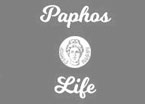
FB PagePaphos Life on Facebook
Like us on Facebook and stay notified of new blog posts.

FB PageOur Facebook Chat Group
Paphos Chat has been created for people who like our site and want to chat using Facebook. You can also easily upload photos of any size here. A lot of people are members of the Facebook chat group and the main forum. It's entirely up to you.
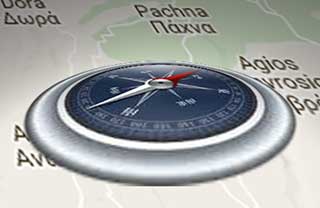
ListBlog Locations
Planning a day out? Then use our map of blog locations as a handy guide. Some of the places we visit our closer to each other than you might think, so take a look and start planning your next adventure...
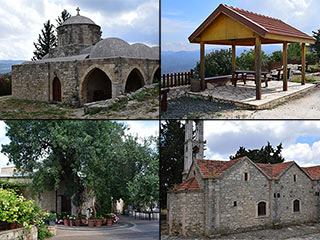
eBookCyprus Road Trip 01: the Kathikas - Panagia Loop
Let me take you on a journey around the region of Paphos, Cyprus. Starting at Paphos itself, we travel to Akoursos, then Kathikas, Kritou Terra and Simou. We continue past Lasa and Kannaviou, before taking in the delights of Panagia. Getting a bit more adventurous, we visit the abandoned villages of Statos and Agios Fotios, before passing through Choulou, Letymbou and Polemi, and rejoining the main Paphos - Polis road.
The route is suitable for all types of vehicle, and requires no off-roading. The guide contains about 130 photographs including shots of all the road signs you need to pay attention to, as well as some of the highlights you may experience along the way.
There are also several maps which will help you keep your bearings.
You can do this journey in a day, or you can break it up into chunks. You can also do it in reverse, to get some completely different views. It is entirely up to you.
